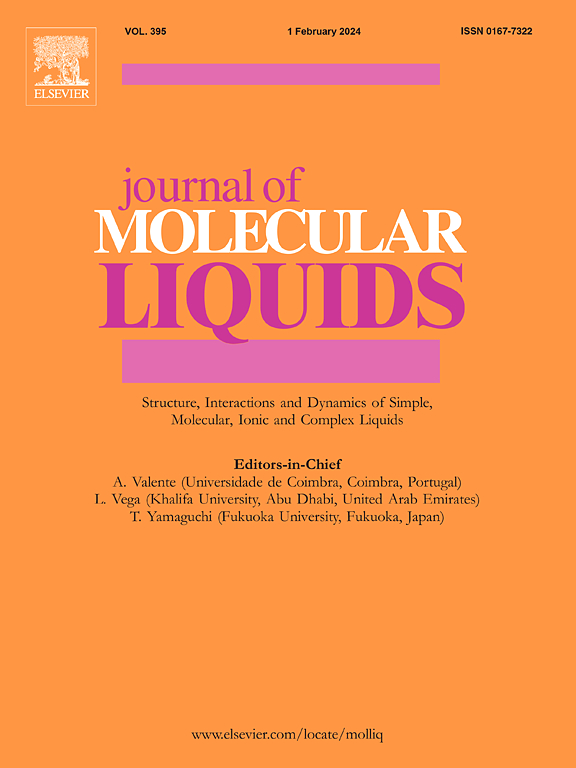Flotation separation of fluorite from calcite and quartz using 1-hydroxyoctane-1,1-bisphosphonic acid
IF 5.3
2区 化学
Q2 CHEMISTRY, PHYSICAL
引用次数: 0
Abstract
Sodium oleate (NaOl) is commonly regarded as a kind of collector with strong recovery ability for fluorite flotation. However, its limited selectivity for fluorite and gangue had affected the production of higher-grade fluorite. In this investigation, 1-hydroxyoctane-1,1-bisphosphonic acid (HOBA) was employed as a potential alternative, offering greater efficiency. Micro-floatation experiments confirmed that HOBA could offer better selectivity than NaOl. Moreover, the interaction mechanisms between HOBA or NaOl and the mineral surfaces of fluorite, calcite, and quartz were systematically studied during the flotation process. Contact angle, zeta potential analyses revealed stronger adsorption on fluorite by HOBA compared to calcite and quartz, which can be attributed to its superior selectivity. FTIR and XPS analyses indicate that this selectivity arises from the chemisorption of reagents on fluorite. DFT calculations further demonstrated that HOBA exhibited the stronger selective adsorption on fluorite than that on calcite and quartz surfaces compared to NaOl, due to its more binding sites, supporting IR and XPS results. Additionally, the electronic structure analysis implies that HOBA should is likely bonded to the mineral surfaces through chemisorption as ionic bonds.
求助全文
约1分钟内获得全文
求助全文
来源期刊

Journal of Molecular Liquids
化学-物理:原子、分子和化学物理
CiteScore
10.30
自引率
16.70%
发文量
2597
审稿时长
78 days
期刊介绍:
The journal includes papers in the following areas:
– Simple organic liquids and mixtures
– Ionic liquids
– Surfactant solutions (including micelles and vesicles) and liquid interfaces
– Colloidal solutions and nanoparticles
– Thermotropic and lyotropic liquid crystals
– Ferrofluids
– Water, aqueous solutions and other hydrogen-bonded liquids
– Lubricants, polymer solutions and melts
– Molten metals and salts
– Phase transitions and critical phenomena in liquids and confined fluids
– Self assembly in complex liquids.– Biomolecules in solution
The emphasis is on the molecular (or microscopic) understanding of particular liquids or liquid systems, especially concerning structure, dynamics and intermolecular forces. The experimental techniques used may include:
– Conventional spectroscopy (mid-IR and far-IR, Raman, NMR, etc.)
– Non-linear optics and time resolved spectroscopy (psec, fsec, asec, ISRS, etc.)
– Light scattering (Rayleigh, Brillouin, PCS, etc.)
– Dielectric relaxation
– X-ray and neutron scattering and diffraction.
Experimental studies, computer simulations (MD or MC) and analytical theory will be considered for publication; papers just reporting experimental results that do not contribute to the understanding of the fundamentals of molecular and ionic liquids will not be accepted. Only papers of a non-routine nature and advancing the field will be considered for publication.
 求助内容:
求助内容: 应助结果提醒方式:
应助结果提醒方式:


